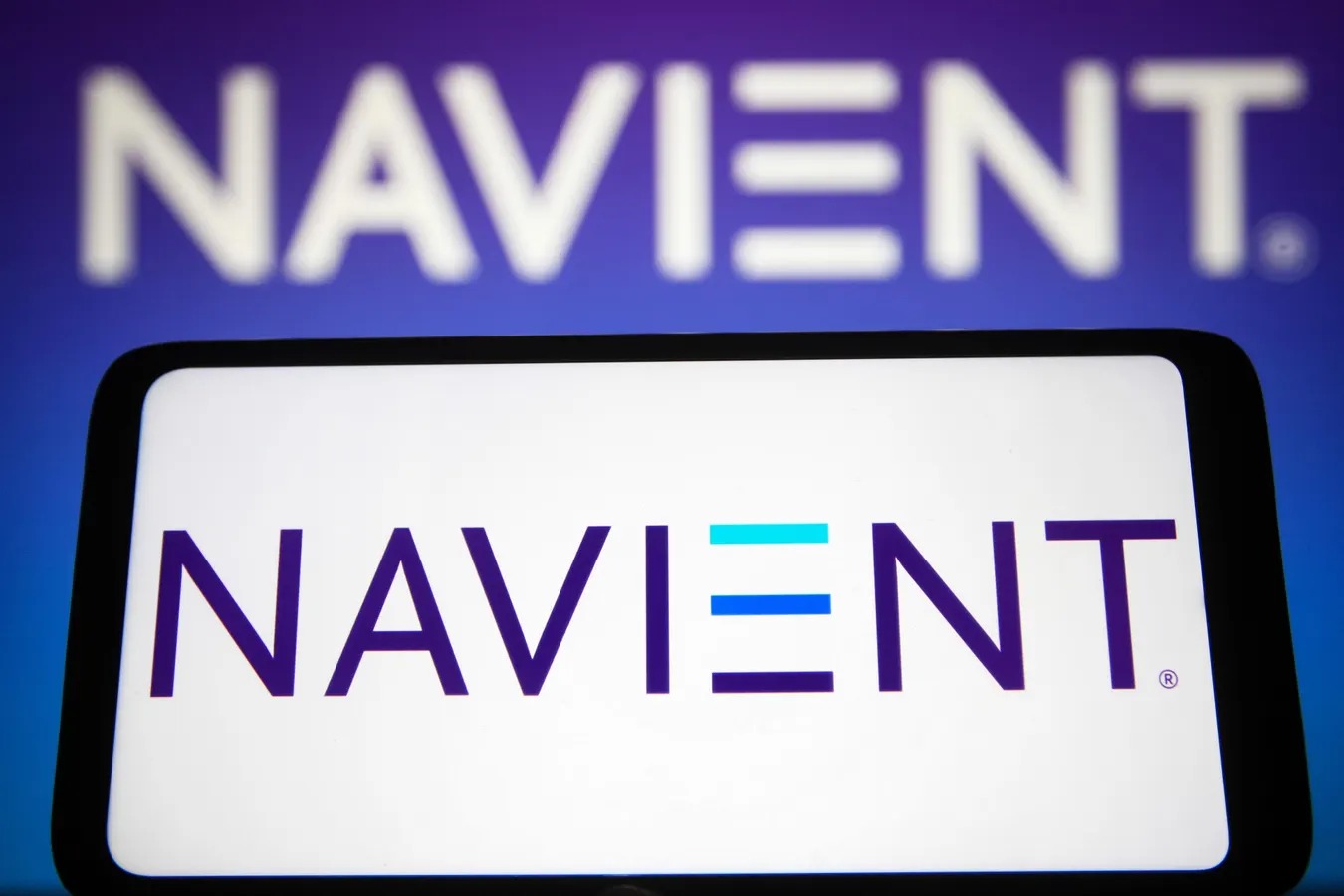Home>Finance>Which Payment Method Offers The Highest Level Of Fraud Protection?


Finance
Which Payment Method Offers The Highest Level Of Fraud Protection?
Published: February 19, 2024
Discover the top payment methods for fraud protection in finance. Learn how to safeguard your transactions and minimize risk. Choose the best payment method for your financial security.
(Many of the links in this article redirect to a specific reviewed product. Your purchase of these products through affiliate links helps to generate commission for LiveWell, at no extra cost. Learn more)
Introduction
In today's digital age, the convenience of online transactions has revolutionized the way we shop, pay bills, and conduct business. However, with this convenience comes the inherent risk of fraud and unauthorized transactions. As a result, consumers and businesses alike are increasingly concerned about the security of their payment methods. When it comes to choosing a payment method that offers the highest level of fraud protection, several options are available, each with its own set of advantages and potential vulnerabilities.
Ensuring the safety and security of financial transactions is paramount in the digital realm. Whether you're making a purchase, sending money to a friend, or receiving payments for goods and services, understanding the fraud protection measures provided by different payment methods is crucial. From traditional credit and debit cards to innovative mobile payment apps and the rise of cryptocurrencies, each option presents unique security features and potential risks. By exploring the fraud protection mechanisms inherent in each payment method, consumers and businesses can make informed decisions to safeguard their financial transactions.
In the following sections, we will delve into the intricacies of various payment methods, examining the fraud protection measures they offer and the potential vulnerabilities they may pose. By gaining a comprehensive understanding of these payment options, you will be better equipped to make informed choices that prioritize security without compromising convenience.
It's essential to note that while robust fraud protection measures are in place for each payment method, no system is entirely immune to potential risks. Therefore, adopting best practices for online security, such as using strong, unique passwords, enabling two-factor authentication where available, and monitoring account activity regularly, is crucial to complement the security features provided by different payment methods. With these considerations in mind, let's explore the fraud protection capabilities of various payment methods, empowering you to make informed decisions that prioritize security in your financial transactions.
Credit Card
Credit cards are widely recognized for their robust fraud protection features, making them a popular choice for online and in-person transactions. One of the key advantages of using a credit card is the built-in liability protection, which limits the cardholder’s liability for unauthorized transactions. In the United States, for example, the Fair Credit Billing Act (FCBA) ensures that consumers are liable for a maximum of $50 for unauthorized charges, provided they report the fraud in a timely manner.
Moreover, most credit card issuers offer zero-liability policies, meaning that cardholders are not held responsible for fraudulent charges. This provides a significant layer of protection and peace of mind for consumers, especially when making online purchases or using their credit cards in unfamiliar or high-traffic environments. Additionally, credit card companies employ sophisticated fraud monitoring systems that can detect unusual spending patterns and flag potentially fraudulent transactions, adding an extra layer of security.
Furthermore, many credit cards come with EMV (Europay, Mastercard, and Visa) chips, which generate unique transaction codes for each purchase, making it extremely difficult for fraudsters to replicate card information for unauthorized use. These chips have significantly reduced counterfeit fraud in countries where they are widely adopted.
Despite these robust security measures, credit cards are not immune to fraud. Phishing scams, card skimming devices, and data breaches can still compromise cardholder information. Therefore, it is essential for consumers to review their credit card statements regularly, report any suspicious activity promptly, and take advantage of additional security features such as transaction alerts and virtual card numbers when offered by their card issuer.
In summary, credit cards offer a high level of fraud protection through liability limitations, zero-liability policies, EMV chip technology, and advanced fraud monitoring. By staying vigilant and leveraging the security features provided by credit card issuers, consumers can mitigate the risks associated with fraudulent transactions and enjoy the convenience and purchasing power that credit cards offer.
Debit Card
Debit cards are a prevalent payment method, providing convenient access to funds in checking or savings accounts. While they offer ease of use and widespread acceptance, the level of fraud protection associated with debit cards differs from that of credit cards. When it comes to unauthorized transactions, the liability protection for debit card users is contingent on how quickly the cardholder reports the fraud.
Under the Electronic Fund Transfer Act (EFTA), if a debit card is reported lost or stolen before any unauthorized transactions occur, the cardholder is not liable for any subsequent charges. However, if unauthorized transactions are made before the card is reported missing, the cardholder’s liability is determined by how quickly they report the unauthorized activity. If reported within two business days, the maximum liability is $50. If reported after two business days but within 60 days of receiving the statement that shows the unauthorized transactions, the liability can increase to $500. If the unauthorized charges go unreported beyond 60 days, the cardholder may face unlimited liability.
Many debit cards also offer zero-liability protection similar to credit cards, but it is essential for cardholders to review their financial institution’s specific policies regarding unauthorized transactions. Additionally, some debit cards come with EMV chips, providing enhanced security by generating unique transaction codes for each purchase, similar to credit cards.
Despite these measures, debit cards are susceptible to certain types of fraud, including card skimming, identity theft, and unauthorized online transactions. As such, it is crucial for debit card users to monitor their account activity regularly, set up transaction alerts, and promptly report any unauthorized charges to their financial institution.
While debit cards offer convenience and direct access to funds, it is important for users to understand the specific fraud protection measures provided by their financial institution and to take proactive steps to safeguard their accounts. By staying informed and proactive, debit card users can minimize the impact of unauthorized transactions and maintain the security of their financial assets.
PayPal
PayPal has emerged as a leading digital payment platform, offering users a secure and convenient way to make online transactions, send money, and receive payments. One of the key features that sets PayPal apart is its robust fraud protection measures, providing users with added security and peace of mind when conducting financial activities online.
When it comes to unauthorized transactions and fraud protection, PayPal offers a comprehensive set of safeguards. For eligible transactions, PayPal’s Purchase Protection program covers users for the full amount of the item plus the original shipping costs if the purchased item does not arrive or does not match the seller’s description. This protection also extends to unauthorized transactions, providing users with a level of security that is highly valued in the realm of online payments.
Moreover, PayPal employs advanced fraud detection and prevention tools to monitor transactions and identify potentially fraudulent activity. This includes real-time transaction monitoring, encryption technology, and machine learning algorithms that analyze patterns and behaviors to detect and prevent unauthorized access and transactions. Additionally, PayPal offers two-factor authentication and the option to set up transaction alerts, adding an extra layer of security to users’ accounts.
Furthermore, PayPal’s Buyer and Seller Protection policies provide additional layers of security for users engaging in online commerce. These protections help safeguard both buyers and sellers from fraudulent claims and unauthorized transactions, fostering trust and confidence in the PayPal ecosystem.
While PayPal offers robust fraud protection, users should remain vigilant and take proactive measures to enhance their account security. This includes using strong, unique passwords, enabling two-factor authentication, regularly reviewing account activity, and promptly reporting any unauthorized transactions or suspicious activity to PayPal’s customer support.
In summary, PayPal stands out for its comprehensive fraud protection measures, including Purchase Protection, advanced fraud detection tools, and Buyer and Seller Protection policies. By leveraging these security features and adopting best practices for online security, PayPal users can enjoy the convenience of digital payments while minimizing the risks associated with unauthorized transactions and fraudulent activities.
Mobile Payment Apps
Mobile payment apps have transformed the way individuals and businesses conduct financial transactions, offering a seamless and convenient way to make payments, transfer funds, and manage money on the go. With the widespread adoption of mobile payment apps, such as Apple Pay, Google Pay, and Samsung Pay, users are increasingly concerned about the level of fraud protection and security measures inherent in these platforms.
Mobile payment apps employ various security features to protect users from unauthorized transactions and fraudulent activities. One of the primary security measures is tokenization, which replaces sensitive card information with a unique token, ensuring that the actual card details are not transmitted during a transaction. This significantly reduces the risk of card information being intercepted or compromised during the payment process.
Additionally, many mobile payment apps utilize biometric authentication, such as fingerprint or facial recognition, to authorize transactions, adding an extra layer of security to the payment process. This biometric authentication enhances the security of mobile payments by ensuring that only authorized users can initiate transactions, mitigating the risk of unauthorized access to the app and the associated payment methods.
Furthermore, mobile payment apps often offer transaction alerts and real-time notifications, allowing users to monitor their account activity and quickly identify any suspicious or unauthorized transactions. These proactive alerts empower users to take immediate action in the event of potential fraud, enhancing the overall security of their mobile payment accounts.
While mobile payment apps incorporate robust security measures, users should also take proactive steps to safeguard their accounts. This includes setting up strong authentication methods, regularly reviewing transaction history, and keeping the app and device software up to date to ensure the latest security patches are in place.
In summary, mobile payment apps offer a high level of fraud protection through tokenization, biometric authentication, transaction alerts, and real-time notifications. By leveraging these security features and adopting best practices for mobile security, users can embrace the convenience of mobile payments while minimizing the risks associated with unauthorized transactions and fraudulent activities.
Cryptocurrency
Cryptocurrency, such as Bitcoin and Ethereum, has garnered significant attention as a decentralized digital currency that operates on a secure, transparent, and immutable blockchain network. While the adoption of cryptocurrency introduces a new paradigm for financial transactions, it also raises questions about the level of fraud protection and security measures inherent in this innovative form of digital asset.
One of the fundamental aspects of cryptocurrency is its security architecture, which is built on cryptographic principles and decentralized consensus mechanisms. Transactions conducted with cryptocurrency are secured through complex cryptographic algorithms, making it extremely difficult for unauthorized parties to manipulate or counterfeit transactions. The decentralized nature of blockchain technology also enhances the security of cryptocurrency transactions, as it eliminates the single point of failure associated with traditional centralized systems.
Moreover, the use of public and private keys in cryptocurrency transactions provides a robust layer of security. Each transaction is cryptographically signed with a private key, and the recipient’s public key is used to verify and complete the transaction. This asymmetric encryption ensures the integrity and authenticity of cryptocurrency transactions, mitigating the risk of unauthorized access and fraudulent activities.
While cryptocurrency transactions offer inherent security features, users must remain vigilant and take proactive measures to safeguard their digital assets. This includes securely managing private keys, utilizing reputable cryptocurrency wallets and exchanges, and staying informed about potential security vulnerabilities and best practices for securing cryptocurrency holdings.
It is important to note that the decentralized and pseudonymous nature of cryptocurrency transactions can also pose unique challenges in terms of fraud protection. The irreversible nature of cryptocurrency transactions means that once a transaction is confirmed on the blockchain, it cannot be easily reversed, requiring users to exercise caution and due diligence when conducting cryptocurrency transactions.
In summary, cryptocurrency transactions are secured through cryptographic algorithms, decentralized consensus mechanisms, and public-private key cryptography, providing a high level of inherent security. By understanding the principles of cryptocurrency security and adopting best practices for securing digital assets, users can navigate the evolving landscape of cryptocurrency with confidence while mitigating the risks associated with unauthorized transactions and fraudulent activities.
Conclusion
As the digital landscape continues to evolve, the security of financial transactions remains a paramount concern for consumers and businesses alike. The various payment methods available, including credit cards, debit cards, PayPal, mobile payment apps, and cryptocurrency, offer distinct fraud protection measures and security features that cater to the diverse needs of users in the digital economy.
Credit cards stand out for their robust fraud protection, liability limitations, zero-liability policies, and advanced fraud monitoring systems, providing users with a high level of security for both online and in-person transactions. Similarly, debit cards offer convenience and direct access to funds, coupled with liability protection and EMV chip technology, albeit with specific considerations regarding unauthorized transactions and timely reporting.
PayPal, as a leading digital payment platform, offers comprehensive fraud protection through its Purchase Protection program, advanced fraud detection tools, and Buyer and Seller Protection policies, fostering trust and confidence in online transactions. Mobile payment apps leverage tokenization, biometric authentication, and real-time notifications to enhance the security of mobile payments, empowering users to transact with confidence while minimizing the risks associated with unauthorized access and fraudulent activities.
Furthermore, the emergence of cryptocurrency introduces a new paradigm for financial transactions, characterized by inherent security features such as cryptographic algorithms, decentralized consensus mechanisms, and public-private key cryptography. While cryptocurrency transactions offer a high level of security, users must exercise caution and adopt best practices for securing their digital assets in the decentralized and pseudonymous environment of cryptocurrency.
Ultimately, the highest level of fraud protection is achieved through a combination of robust security measures inherent in each payment method and proactive user practices. By staying informed, leveraging the security features provided by payment platforms, and adopting best practices for online security, consumers and businesses can navigate the digital economy with confidence, mitigating the risks associated with unauthorized transactions and fraudulent activities.
As technology continues to advance, it is imperative for users to remain vigilant, adapt to evolving security measures, and prioritize the protection of their financial transactions. By understanding the fraud protection mechanisms inherent in different payment methods and embracing a proactive approach to security, individuals and businesses can harness the benefits of digital payments while safeguarding their financial assets in an increasingly interconnected and digital world.














